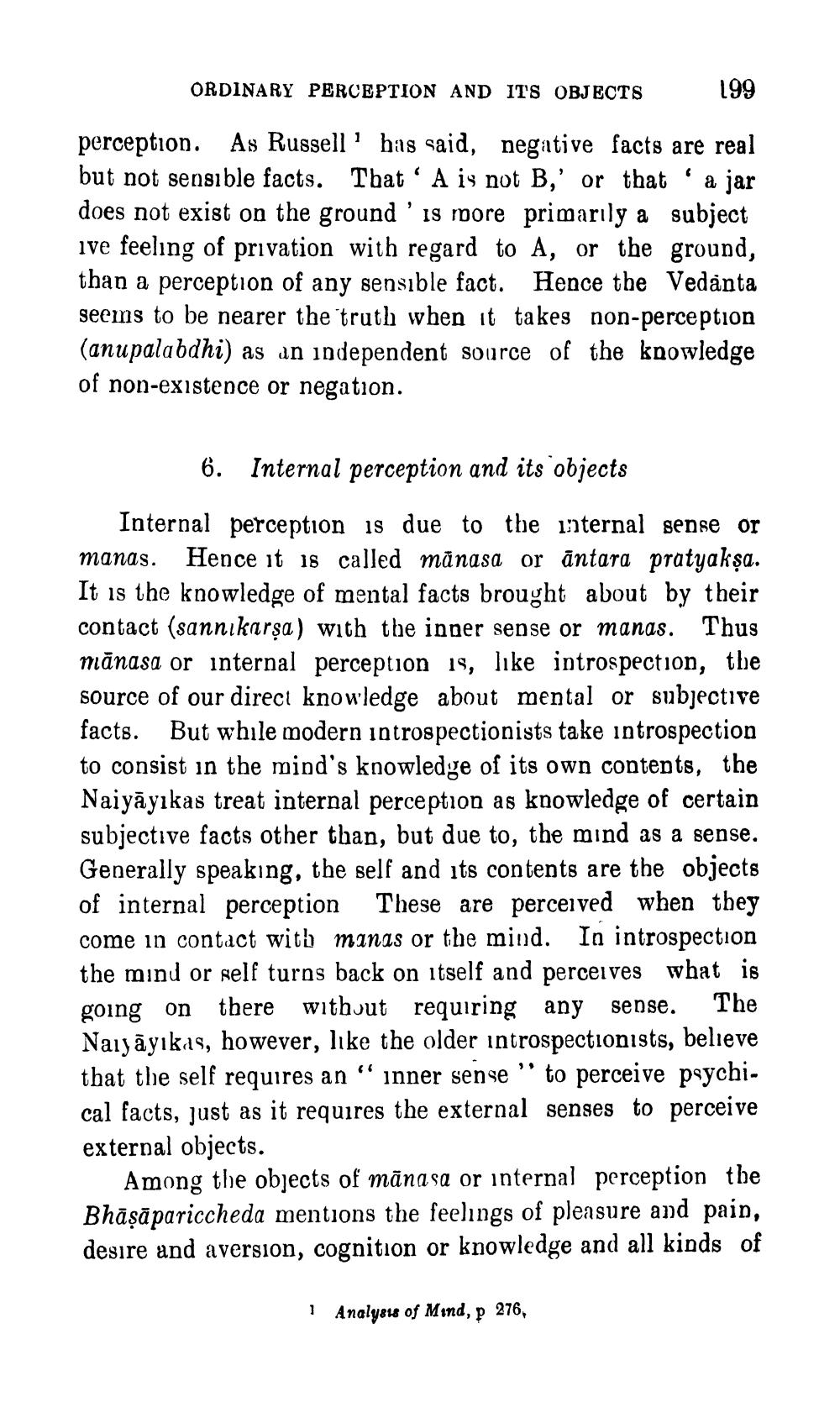________________
ORDINARY PERCEPTION AND ITS OBJECTS
199
perception. As Russell' bas said, negative facts are real but not sensible facts. That' A is not B,' or that 'a jar does not exist on the ground' is more primarily a subject ive feeling of privation with regard to A, or the ground, than a perception of any sensible fact. Hence the Vedanta seems to be nearer the truth when it takes non-perception (anupalabdhi) as an independent source of the knowledge of non-existence or negation.
6. Internal perception and its objects
Internal perception is due to the internal sense or manas. Hence it is called mūnasa or antara pratyakşa. It is the knowledge of mental facts brought about by their contact (sannikarşa) with the inner sense or manas. Thus mānasa or internal perception is, like introspection, the source of our direct knowledge about mental or subjective facts. But while modern introspectionists take introspection to consist in the mind's knowledge of its own contents, the Naiyāyikas treat internal perception as knowledge of certain subjective facts other than, but due to, the mind as a sense. Generally speaking, the self and its contents are the objects of internal perception These are perceived when they come in contact with manas or the mind. In introspection the mind or self turns back on itself and perceives what is going on there without requiring any sense. The Naiyāyikas, however, like the older introspectionists, believe that the self requires an “inner sense" to perceive psychical facts, just as it requires the external senses to perceive external objects.
Among the objects of mānasa or internal perception the Bhāṣāpariccheda mentions the feelings of pleasure and pain, desire and aversion, cognition or knowledge and all kinds of
1 Analysis of Mind, p 276,




